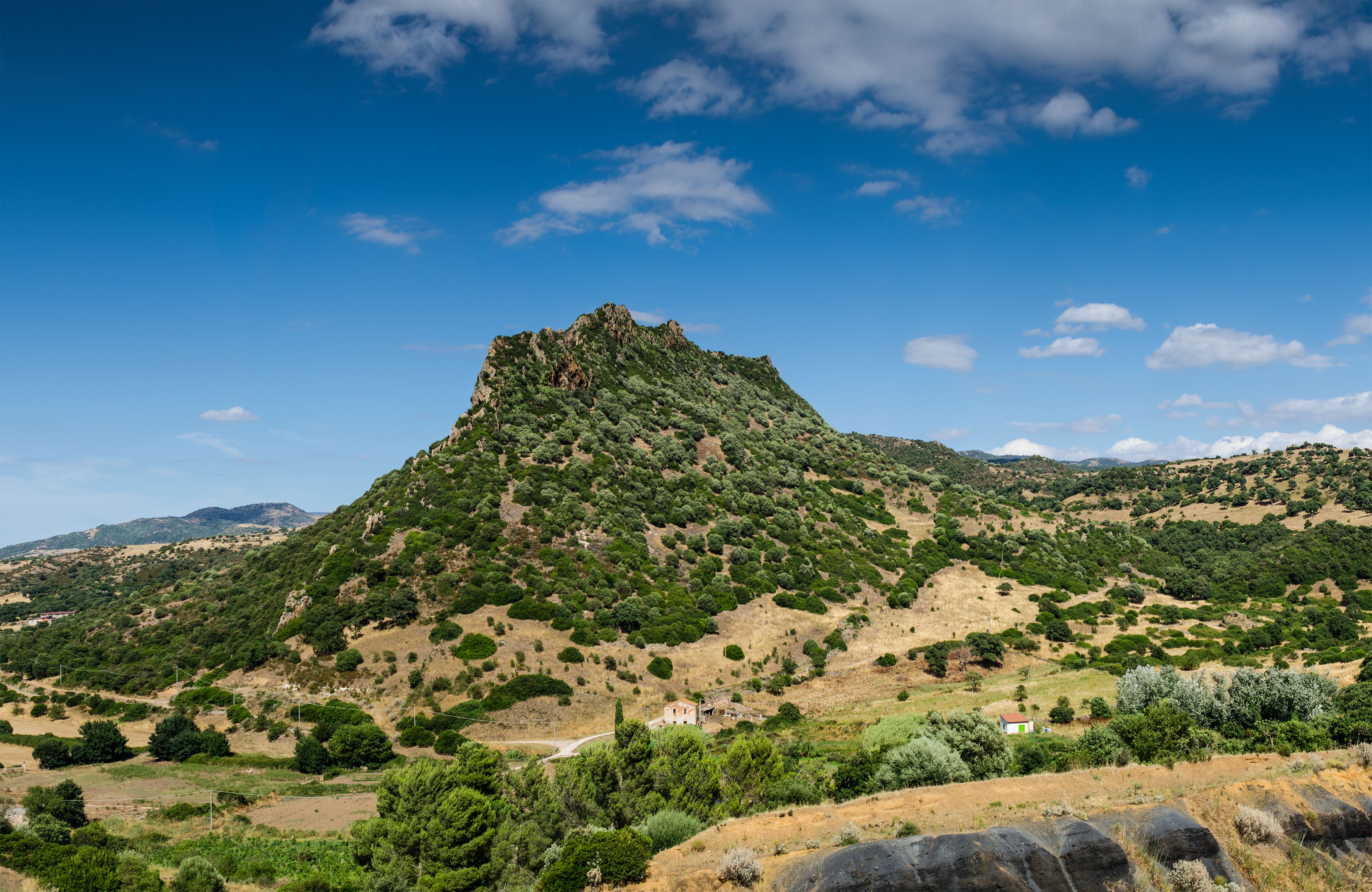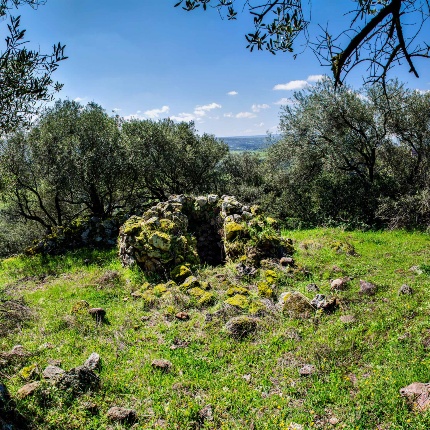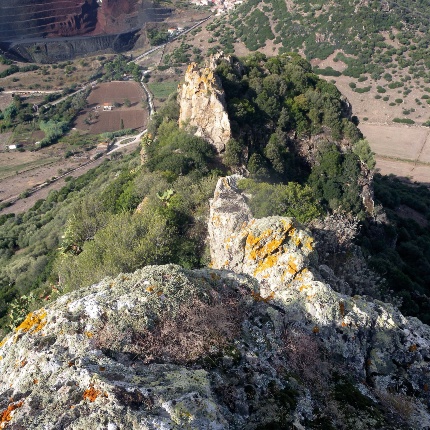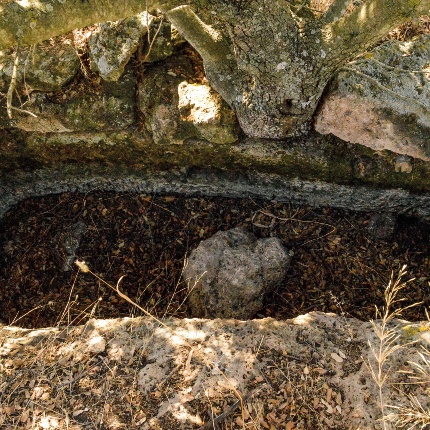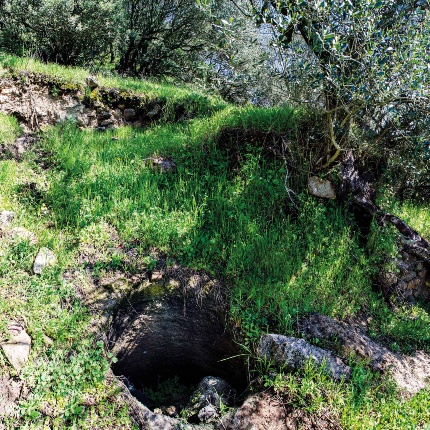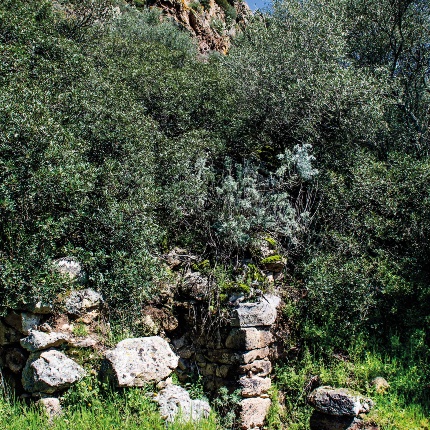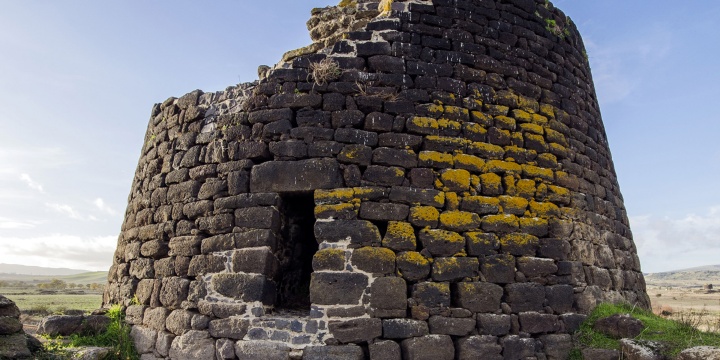Media gallery
Description
Located 600 meters above sea level, Monte Zuighe is a multilayered site that testifies to a long human presence, from the prehistory to the Middle Ages. The archaeological remains, often hidden by vegetation, tell of its strategic and cultural importance.
The Megalithic Wall of Su Baglittu, on the eastern summit, features a monumental entrance and a covered corridor made up of slabs, hypothetically dating back to the Eneolithic. Flint artifacts have been found nearby.
The Nuraghe Bagliu, mentioned in 1940 by Taramelli, was located in the Sos Coceos valley, but today only a few blocks remain on the southern slope. Further down, a vast Nuragic settlement, visually connected to the Nuraghe Funtana, is evidenced by numerous finds dating back to the Iron Age.
On the slope, there is an elliptical furnace with a tholos covering, while nearby emerge rectangular dwelling structures with silos and cisterns dug into the rock, perhaps for the conservation of water or food supplies.
At the summit area, Roman-era funerary pits stand out, while the remains of the Castle of Monte Zuighe, mentioned by Alberto La Marmora as the possible "Monte del Giudice", rise at the top. It still has alignments of blocks and an imposing wall with a lintel.

Contacts
GWW8+7G Ittireddu SS, Italia
Today’s weather
16°
Vento NNE 1 km/h
Humidity 84%

